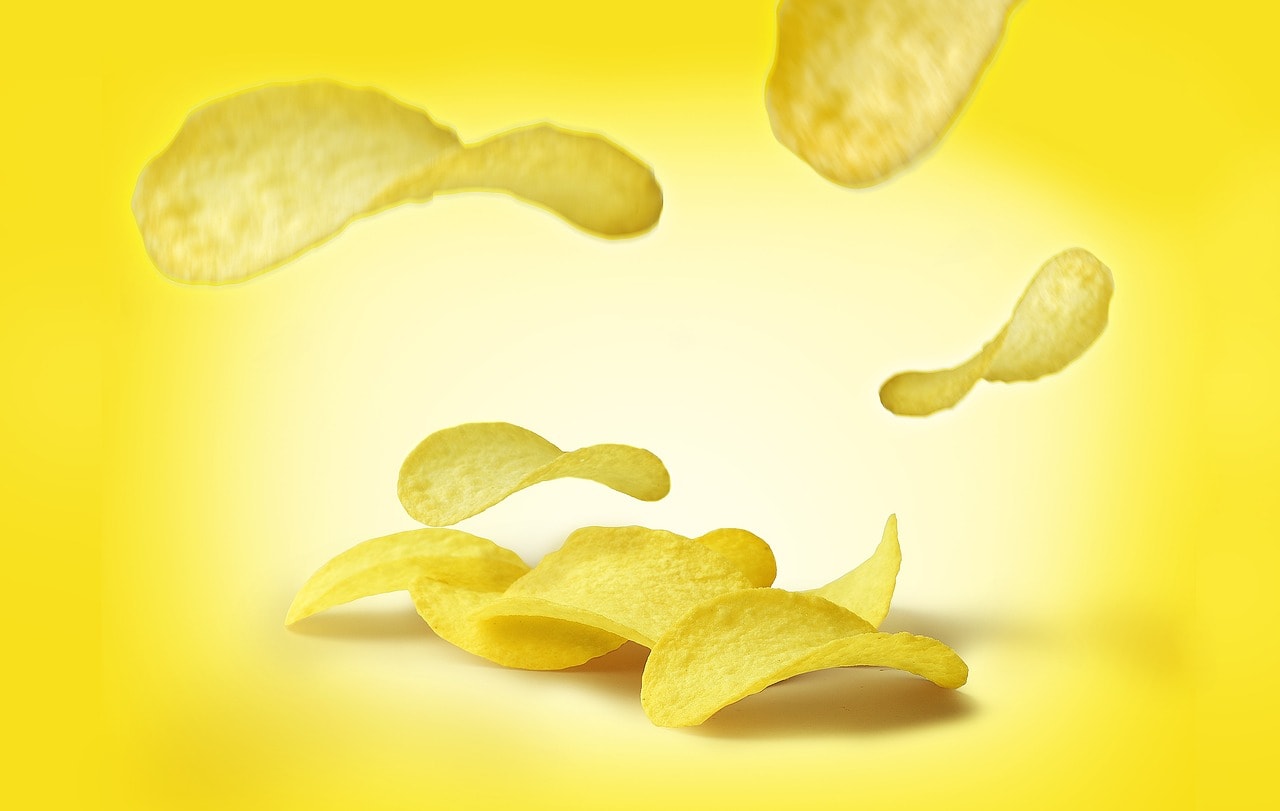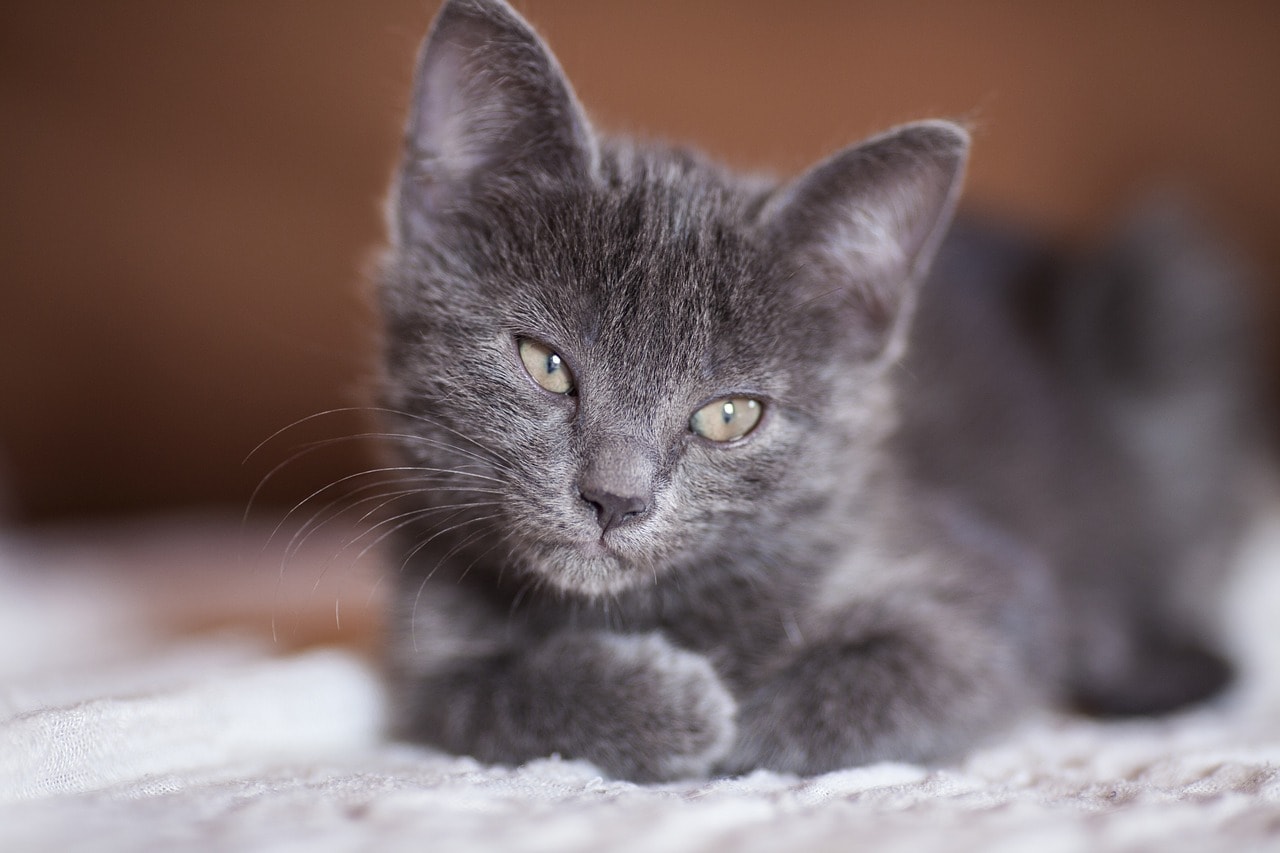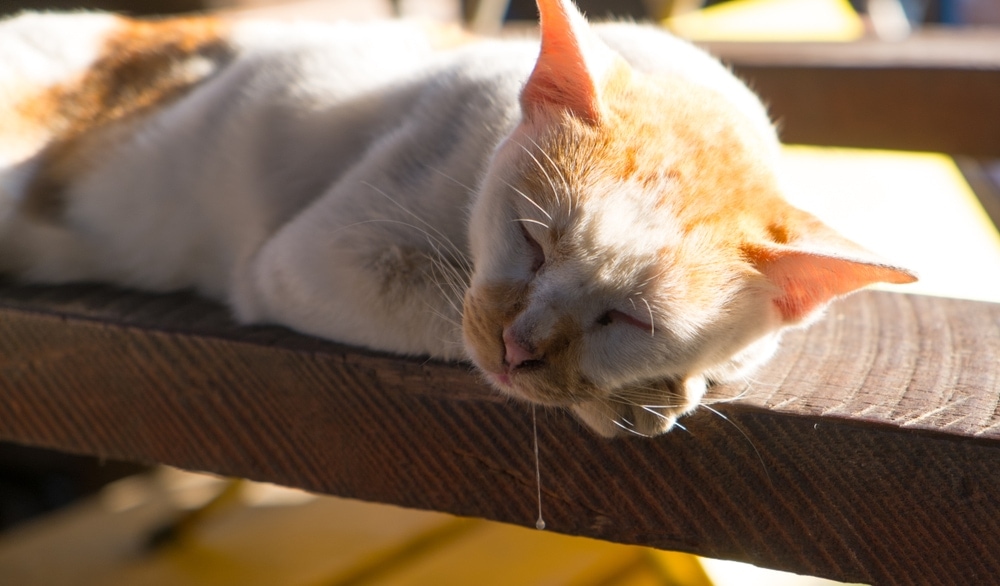Why Do Cats Knead and Purr? 8 Typical Reasons

Updated on
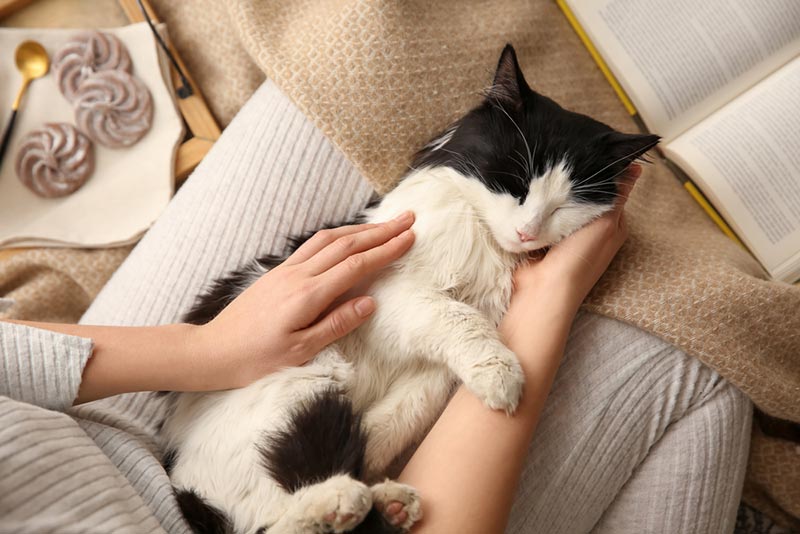
As pet owners, we often wonder why our pets exhibit adorable or strange behaviors. There are times when a particular behavior is specific and others are not. For instance, a cat’s kneading and purring behavior can mean different things.
Here is a list of eight possible reasons your cat purrs while moving in a rhythmic motion with its paws.
The 8 Reasons Cats Knead and Purr
1. Kneading Is Instinctual
Kneading is an instinct for kittens when they are nursing from their mother. While they are purring and pushing back and forth on their mommy’s belly, they are encouraging milk production.
In adulthood, cats may continue to knead stuffed animals, blankets, their owners, and other things in their environment. It is possible that cats continue to knead and purr after they are done nursing because there is a positive association with the action. As kittens, the kneading and purring behavior resulted in a reward of milk. So kneading is a behavior that makes them happy and content.
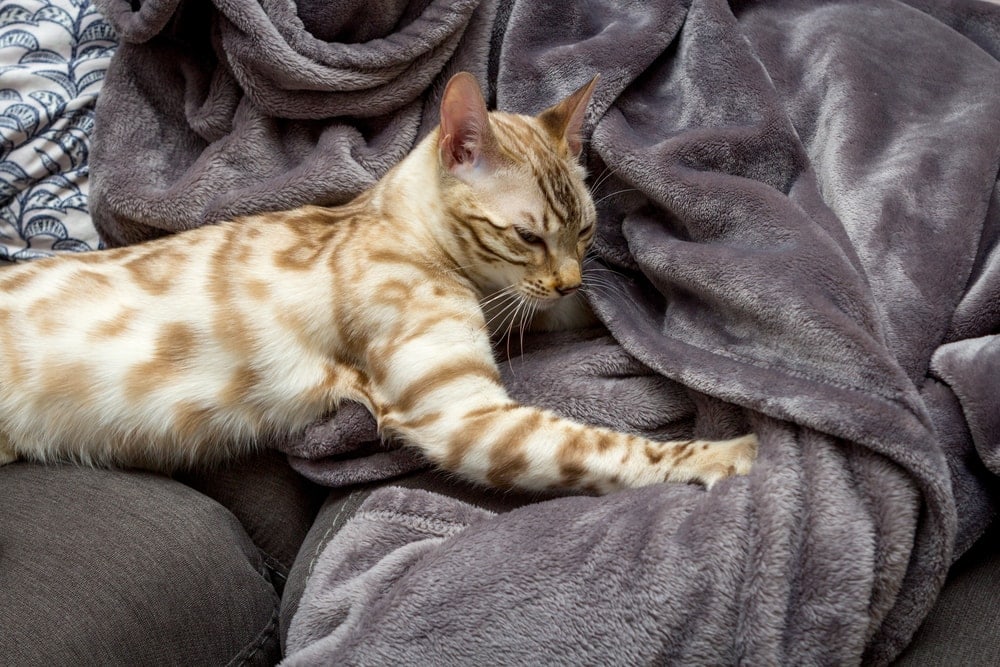
2. Your Cat May Want Attention
As your cat jumps on your lap and begins purring and kneading on your belly, you may respond by giving it attention by petting it, moving it, or talking to it. Once again, there is a positive association with kneading and purring and getting love and attention from their humans.
Kneading cats are happy cats. They like to knead when they are getting attention or getting cozy for a nap with their owner. A cat may also knead to calm the mood if they are feeling anxious or stressed.
3. Kneading Is a Cat’s Way of Showing Affection
Unlike dogs, cats are more subtle when telling you he appreciates and likes you. Kneading and purring may be the way your cat shows you affection. When cats feel safe and secure with their human, like they did with their mommy, they may start kneading on you to show you affection.
As you are giving your cat attention and love, it wants to show you it loves you too. Kneading is one of the ways your cat will let you know it cares about you.
When cats knead on their people, they may not be aware that they are causing pain with their claws. It is a natural behavior for them, so they should not be punished or yelled at when they do it. If your cat is kneading on you and causing you pain, try putting a blanket or pillow between you so he does not hurt you.
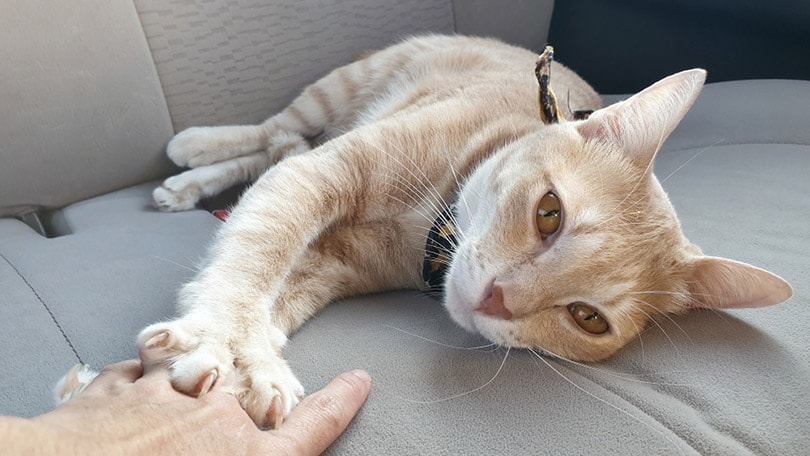
4. Cats Knead to Mark Their Territory
Cats use the scent glands on the bottom of their paws to mark their territory. They do this by scratching the area with their claws and leaving their scent behind. When a cat kneads, the rubbing and kneading motion activates the scent glands and allows them to mark the area.
Cat owners know that cats think everything in their environment is theirs, including their people, so they will mark things accordingly.
5. Cats Knead to Relax
If your cat is kneading and purring and looks sleepy-eyed, it may be going into relaxation mode. With sleepy eyes and a relaxed appearance,
it may be ready for a little nap. Cats use kneading to make a soft resting place. Wild cats use kneading to make a soft bed out of things like grass, so domestic cats may be mimicking the behavior because it is instinctual.
At bedtime, some cats will knead your chest and belly to relax and get ready to sleep for the night. Enjoy the moment! Your cat is letting you know it trusts you.
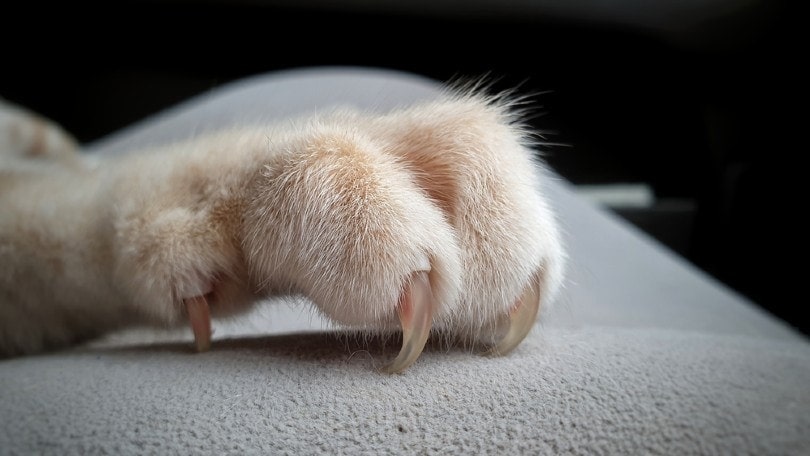
6. Kneading to De-Stress
Some cats may use kneading to comfort themselves. A cat that is kneading when it feels stressed may not be able to fall asleep or relax. According to Mikel Delgado, a certified cat behavior consultant, other signs that may indicate your cat is kneading to soothe itself include hiding, tail flicking, pinned back eyes, dilated pupils, keeping their tail tight and against their body, increased breathing, and aggression.
If your cat is alone for long stretches, the kneading may increase when you are home. You can help your feline de-stress by spending some time brushing or playing with it.
If the kneading is obsessive, you may want to seek the advice of your veterinarian. There may be something more going on with your cat.
7. Kneading to Stretch
Like humans, cats need to get in a few yoga sessions to stretch their legs and muscles now and then. Kneading is an excellent way for your cat to get in a good stretch, so its body feels fit and lively. After a good night’s sleep or a little catnap, cats like to stretch out their muscles by kneading their paws until their next sleep session. It keeps them limber so they can continue to jump and climb with ease.
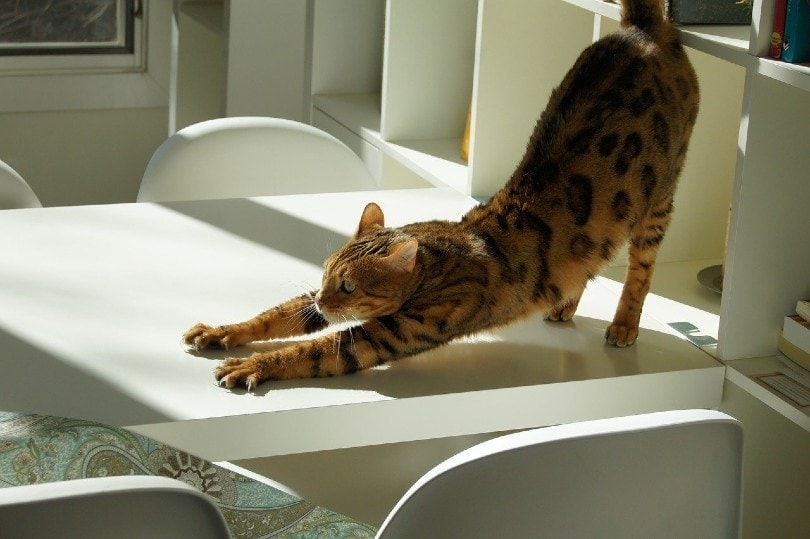
8. Kneading for Mates
Female cats may knead when they are in heat. If a female cat is stretching, purring and laying on her side while needing in the air, she may be signaling the male cats to mate.
If a female cat is immediately ready to mate, she will raise her pelvis and move her tail to the side rather than knead her paws, however.
When a cat is in heat, she may also show you more affection and increase making biscuits on your lap.
Conclusion
Whether your cat wants your attention or the attention of a male cat, kneading is an instinctual behavior that may or may not be exhibited by your cat. In most cases, the kneading and purring are indicators that your cat is feeling safe, and content and wants to show you it likes being around you.
Featured Image Credit: New Africa, Shutterstock

